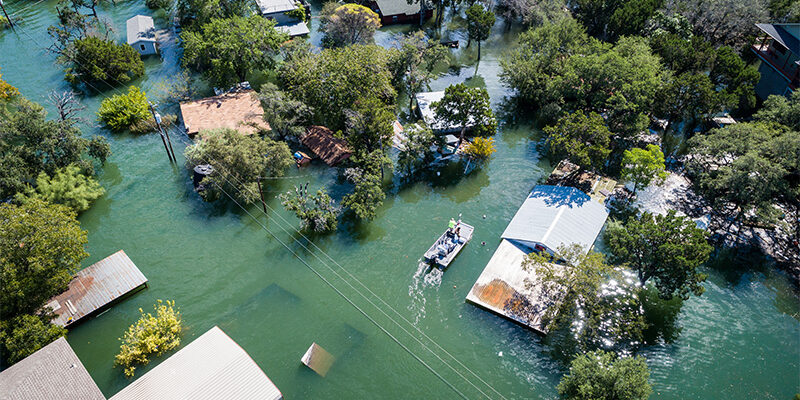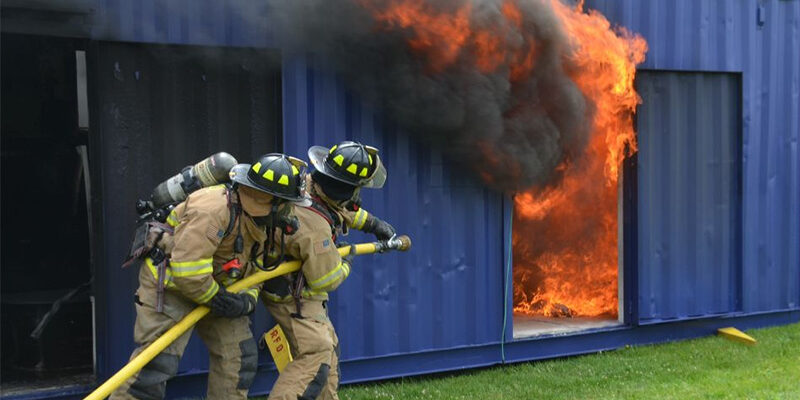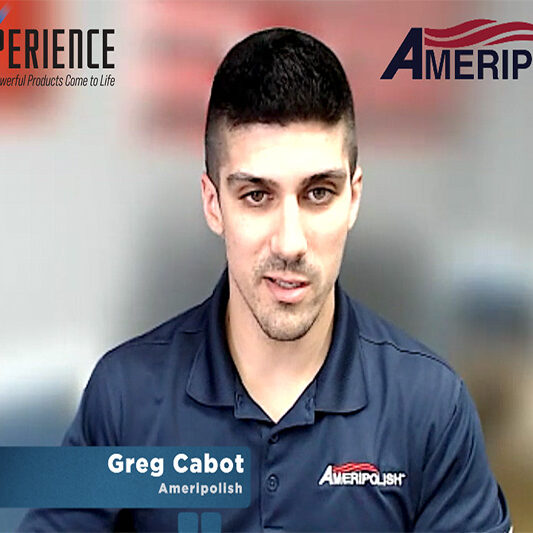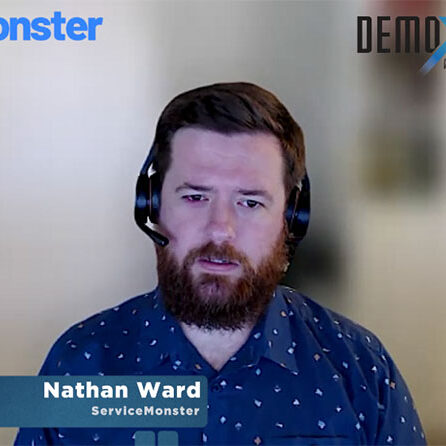Restoration: State of the Industry

From the fourth quarter of 2023, through the second quarter of this year, the industry has experienced some of the slowest quarters with claims and revenue down by at least 25%, said Jeff Moore, ATI Restoration president and chief acquisitions officer. However, with increased hurricane activity and rainfall, he anticipates the industry will end the year ahead of previous years.
“The impact of global warming is evident through more violent hurricanes and deadly wildfires,” Moore explained.
Overall, the industry appears to have shaken the post-COVID-19 effects and is turning toward what’s next, said Jace Neville, Neville and Sons operations manager of Neville’s Carpet. In general, “less nervousness and reaction” and instead more positive forward thinking is occurring.
“We have seen customers calling us back who haven’t had any sort of cleaning for five-plus years,” Neville said. “It seems like the market is willing and growing, locally here at least. Cleaning other than carpet, furniture, tile, rugs, and other floorings are all up compared to previous years.”
Neville also has seen an uptick in water events.
“The events that would normally happen once every 18 months or so seem to be happening more often—whether it’s freezing in the wintertime or rain events in the summertime,” Neville said. “They create an overwhelming period of work for all our company, but we have been able to work through them and make sure that we take care of everyone who calls us.”
Bud Summers, PuroClean executive vice president of operations, also believes more prospects are available than ever. “As urban areas grow, it creates more opportunities,” he said. “More homes mean more work.”
Still, Summers added that with more homeowners trying to take on home repairs on their own, providing exceptional customer service and a quality customer experience is imperative now more than ever.
Finding growth and acquisitions
Searching for gains, the industry continues to see increased consolidation, with private equity interest growing since 2018.
“We have about half a dozen active acquirers who will continue to grow quickly, and each year, we will see other smaller private equity firms try to buy smaller local restoration companies and turn them into big national brands or acquire half a dozen local firms and try to get them on the same page,” Moore said. “Right now, we have approximately three brands doing over $2 billion in revenue, and by 2030, I predict we will have six-plus brands doing over $2 billion annually and one or more doing over $7.5 billion in revenue. While 2024 to 2025 will focus on consolidation, it may not reach the levels of 2023 due to external constraints like interest rates and the upcoming election.”
Another trend the industry is observing in consolidation is the varying impact of catastrophe work on company valuations. Companies that generate more than 30% of their revenue from catastrophe work, travel, and non-recurring revenue or significant losses are struggling with multiple constraints or aren’t getting offers.
“These companies continue to struggle to find willing and able buyers,” Moore said. “As restorers, we want big jobs and catastrophes, but as buyers, we want steady, predictable revenue businesses. The smaller your job size and the less catastrophe work you rely on actually equates to higher multiples and ultimate valuation.”
Alexander Ruggie, ASAP Restoration LLC marketing director, agreed that, a significant amount of consolidation, agglomeration, and aggregation has occurred lately.
“Mom-and-pop shops are closing down,” Ruggie explained. “Chucks with trucks are getting bolder in their offerings without being able to commit or provide. Smaller companies are being bought out by larger ones. Mid-sized operations are collaborating and forming associations through marketing channels, handshake deals, and referrals. And venture capitalists are consolidating operations at all levels of the industry to maximize profits and corner regional markets with sub-par collectives.
“It can be difficult for sole operators to compete against the bigger players in the industry. Competing against a rigged game is all but impossible, and this has caused a lot of operations to shut their doors.”
Looking at other ways to grow, Scott Vogel, Emergi-Clean Inc.’s chief operations officer, said businesses are expanding their scope of services, and area specialties are less prominent than they used to be.
“A lot of people are trying to branch out,” Vogel said, and he believes this correlates to the industry’s shrinkage.
“The nature of remediation services and restoration services has now almost become like a dead breed,” Vogel explained. “It’s like they’re not specializing in one item. They’re just a jack of all trades and a master of none.”
Vogel is also seeing more pushback from insurance carriers, as well as denials and caps on services. Additionally, where certifications used to matter to customers, they matter less this year. Instead, Vogel said the most crucial factor is the price of a job.
Inflation and rising costs are contributing to the problem.
“It is becoming more challenging to operate in this space in general with the costs of materials and labor all rising dramatically in concert with inflation,” Ruggie said. “This increases the minimum threshold for profiting off of a project significantly, and that has to be related to the consumer, who is already hurting for the same reasons.”
Moore also agreed pricing constraints and multiple parties reviewing estimates have led to lower margins and profitability. “These factors have forced us to innovate and streamline our processes to maintain efficiency and effectiveness,” he said.
Growing the workforce
One way restoration companies are trying to increase efficiency and effectiveness is through their teams. However, finding talented and skilled labor for reconstruction and remediation is becoming more challenging.
“As minimum wages increase, so too do the expectations of those at higher tiers of ability,” Ruggie said. “As people job hop to find the best wages, this creates an instability in the industry that can shake the foundation of businesses. Moreover, with talented labor at such a premium and moving around so readily for the best deal, this can even affect the timeline for an individual consumer too.”
Personnel has been ASAP Restoration’s most significant challenge during the past year, and it appears this will be the same next year. The reason for this mainly lies in the company’s growth and expanding operations.
“Due to this, we are evolving and adapting to the changing workforce and the expectations of that workforce,” Ruggie explained.
For example, last year, ASAP Restoration worked more than 30 active jobs at a time, managed by more than 20 people in the office and field. This year, ASAP Restoration has more than doubled the number of active jobs and is managing them more efficiently with fewer people with more skills and experience.
“This makes them run smoother, go faster, and achieve more profitability in the long run,” Ruggie said.
Additionally, ASAP Restoration has found many of the best people via its existing workforce.
“This approach has worked best because it seems to all come down to trust and collaboration between team members,” Ruggie said. “When our crew knows they can rely on each other to get their portion of the job done, the project flows faster and becomes more profitable.” 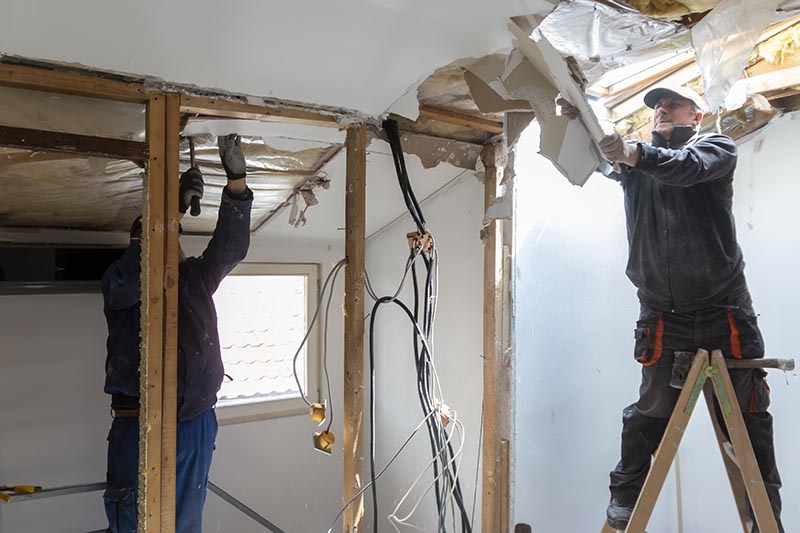
Another recent technique ASAP Restoration has employed is hiring before a drop in productivity occurs.
“Essentially, it can be hard to plan for growth with a dynamic workforce composed of both hourly and salary employees,” Ruggie said. “This peak and valley cycle is hard to plan for, but with time and a bit of practice, we have started to coordinate bringing on new people with additional pushes in our marketing efforts. This way, after the new marketing efforts settle in, we are already prepared with trained and skilled team members ready to take on the influx of work.”
ASAP Restoration also found that its most successful hiring approach with the mitigation side of its business is to partner seasoned experts with new technicians eager to learn.
“This way, there is always education of new team members happening at the same time as being able to provide high-quality results to our clients,” Ruggie said. “No job is ever left with people who don’t know exactly what to do in any situation simply because expertise was spread too thin.”
In the past few years, Neville and Sons instituted new methods to set the business on an outstanding workforce trajectory. “Firstly, we took a deep dive into what we charge, what we want to make, and how much we can pay our employees,” Neville said. “We brought our pay up significantly from our previous starting pay and well over minimum wage, which helps attract talent.”
However, to maintain and grow the talent, the business now focuses on its culture and providing a purpose.
“People do not want to just show up and clock in,” Neville said. “They can do that almost anywhere. The good people want to be a part of something and feel like they can make a difference.”
Another strategy to attract good employees is offering an apprenticeship. Emergi-Clean partnered with its state to hire high school juniors entering their senior years to enter a work development program with career and salary goals. Emergi-Clean developed a program that offers 295 hours of training in a classroom setting and 6,000 hours in the field.
“The reason why we developed an apprenticeship program is really to give these younger members of the workforce—the new workforce—an understanding of the achievement of where they could be in two to three to four years,” Vogel explained. “I feel like the industry, in and of itself, has never really provided that. The turnover is extremely high, and this has caused low-paying jobs.”
Additionally, great teams prepare companies for long-term strategic growth, said Rich Wilson, Paul Davis Restoration president and CEO.
“Recruiting, supporting, and retaining great people are the core drivers of any past, current, and future success,” he said. “My advice is to make it a priority and have the discipline to have it remain a priority.”
ATI Restoration’s Moore agreed that the key to success is retaining good people and ensuring they remain passionate about the company’s brand and culture.
“Focus on nurturing your current team rather than constantly seeking new hires,” he explained. “Keeping employees engaged and in love with the company’s mission and values is crucial. We have had much success with our employee referral program because our workforce can help bring in great talent. Also, continually building relationships and keeping an eye out for talent regardless of an open spot has proven to be beneficial.”
PuroClean also believes that providing training can help attract and retain employees. Summers added that having certified technicians train uncertified technicians is no longer an option as the training becomes diluted.
“We find that having clear roles and responsibilities, a training path that is easily accessible, and the ability for them to get acknowledged for completing training— whether that’s in additional wages or celebrating—is pivotal in attracting and maintaining people,” Summers said.
Embracing technology
Lately, many encouraging technological improvements are happening in the restoration industry.
For example, moisture meters are becoming more sensitive and capable, which makes it easier to detect issues that might have gone unnoticed before, ASAP Restoration’s Ruggie said. Drying equipment also has improved capacity and lower energy requirements, which makes it easier to take on jobs with challenging space or power restrictions. Additionally, the ability to access and monitor remotely is taking much off the plate for remediation. Much of the data that previously needed to be collected in person can now be downloaded to an app and transcoded for however needed.
While the technology for working in the field hasn’t changed much, Ruggie said ASAP Restoration has dabbled in using augmented reality visualization programs to get room measurements and display potential finished product designs.
“We haven’t committed to anything permanently because the technology just isn’t totally there yet,” Ruggie said. “Measurements, for example, are almost always reliable, but sometimes they are far enough off that the math doesn’t work out anymore.”
As Neville and Sons has gradually increased its low-moisture and commercial cleaning during the last few years, particularly in low-moisture cleaning, encapsulation machines have changed the industry significantly. Neville also hopes that more innovation will come in the truckmount cleaning market.
This year, ATI’s Moore has seen promising trends in remote estimating by tapping into several industry-leading technology innovations, along with an increased adoption of artificial intelligence (AI) and automation tools. “It is encouraging to see remote estimating drive operational efficiency, as it allows us to customize roles to better align the strengths and skill sets of our talent,” he explained.
Looking ahead, advancements in AI and automation will continue to shape the industry, streamlining processes and making them more data-driven.
“The impacts of what generative AI could become in the future are transformative, and it’s time now to begin to explore possible applications for the restoration industry,” Moore said. “Use cases like estimating, synthesizing large data, copywriting, customer service support, and idea generation are just the tip of the iceberg.”
PuroClean’s Summers also feels AI will become a significant force moving forward.
“It’s going to change how we estimate,” he explained. “It’s going to change the way we scope jobs, and it’s going to change the way we put together drying plans on mitigation jobs.”
PuroClean has also embraced software technology and made it mandatory for franchisees, ensuring everyone has the same technology.
“It gives us the ability to scale improvements because we’re not having to train 15 different software,” Summers explained.
He expects new software to continue to develop and progress the industry.
“The better the data, the better you can generate improvement and growth,” Summers said. “It’s going to make it much easier to find dollars that are left on the table or expenses that are out-of-line.”
Along with new tools for cleaners and restorers, Summers said customers now also have the option to be better informed about the restoration experience.
“A homeowner can pick up a handheld device and not only search for providers but actually see videos on ‘What does restoration mean?’ and ‘What does water damage mean?’” he explained. “There is so much data. Even 10 years ago, going to a homeowner, we had to explain to them what was going to happen. Now, by the time we get there, they have already watched five different videos and quite often already have ideas on how their homes should be dried.”
Wilson said Paul Davis also understands the need to incorporate technology into its short- and long-term strategy while benefiting from an extensive network to pilot and vet the efficacy of each potential tool.
Still, technology can present challenges.
“As restorers, we need end-to-end solutions, but current technology and software companies fall short,” Moore explained. “We need a comprehensive product that supports us from the first notice of loss—receiving the loss—to collecting dollars from the job.”
Moving forward
Many in the industry expect the year to end with growth.
“Thanks to a heightened sense of cleanliness in our homes, we will also see returning customers who haven’t thought about cleaning in years,” Neville said.
While weather events will continue, they are impossible to predict, Neville added.
As the industry continues to move through the year, further consolidation is also the norm.
“As companies go under or coalesce into collectives, they seem to be reducing their actual capacity and subcontracting out more of the actual work,” ASAP Restoration’s Ruggie said. “This means that for enterprises like ours that do everything from A to Z, and for potential customers that want a single point of contact, our services are more attractive than ever.”
Still, ATI’s Moore expects the industry to continue to face margin depression due to volatile material prices and increased scrutiny from third-party companies. Adopting new technologies and investing in innovative solutions is essential to maintaining profitability.
“At ATI, we are looking into AI to automate estimates from 3D scans,” Moore said. “Within ten years, these scans will be able to handle 90% of the estimating through AI. Companies that invest in this technology, whether developing it in-house or purchasing from others, will stand out. We all need to invest in tomorrow, balancing our current operations with a vision for the future. Those who maintain this big-picture perspective will adapt, thrive, and avoid consolidation or disappearance in the marketplace.”
Whether this year ends slow, steady, or ahead for your business, Emergi-Clean’s Vogel said investment within your company is essential to build a better future. When businesses cut training funding, Vogel believes companies start to spiral, quality diminishes, and customer service drops.
“I increased my training budget because I want the guys to go out and train, be better prepared, and work on productivity for when we do get busy,” Vogel said. “And we always get busy.”
Industry Contributors
Jeff Moore, ATI Restoration president and chief acquisitions officer, is a second-generation restorer, who has worked in the company since 1994. ATI Restoration is a full-service restoration and remediation contractor offering construction, restoration, and environmental services. Additionally, Moore is president-elect for the Restoration Industry Association (RIA).
Jace Neville, Neville and Sons operations manager of Neville’s Carpet, has personally been in the 47-year-old business for 16 years. The company operates under three business units: Neville’s Restoration, Neville’s Carpet, and Neville’s Repairs.
Bud Summers, PuroClean executive vice president of operations, has also been an independent restoration owner and a franchise owner with almost 40 years of experience. PuroClean has become one of North America’s leading property damage remediation franchise organizations, with a network of nearly 500 locations.
Alexander Ruggie, ASAP Restoration LLC marketing director, has worked in restoration for four years and construction for close to a decade. ASAP Restoration offers remediation, restoration, and remodeling services throughout Arizona, though mainly in Phoenix. While the business focuses primarily on residential, ASAP Restoration is breaking into commercial and light industrial projects.
Scott Vogel, Emergi-Clean Inc. chief operations officer, has been in the industry for more than 18 years. Emergi-Clean services the New Jersey tri-state area with biohazardous remediation, including for crime scenes, homicides, accidents, and other deaths.
Rich Wilson, Paul Davis Restoration president and CEO for the past nine years, said business has been growing double-digits for the past decade. As a full-service restoration provider in the U.S, and Canada, Paul Davis’ services include water and smoke mitigation, remediation, contents, and reconstruction.


